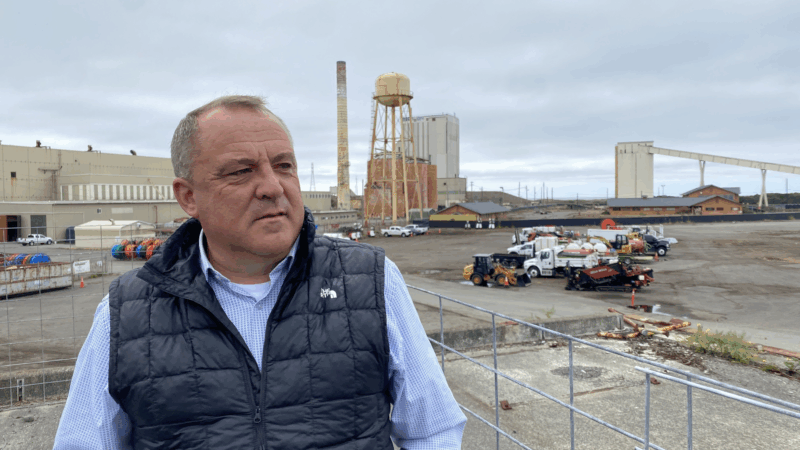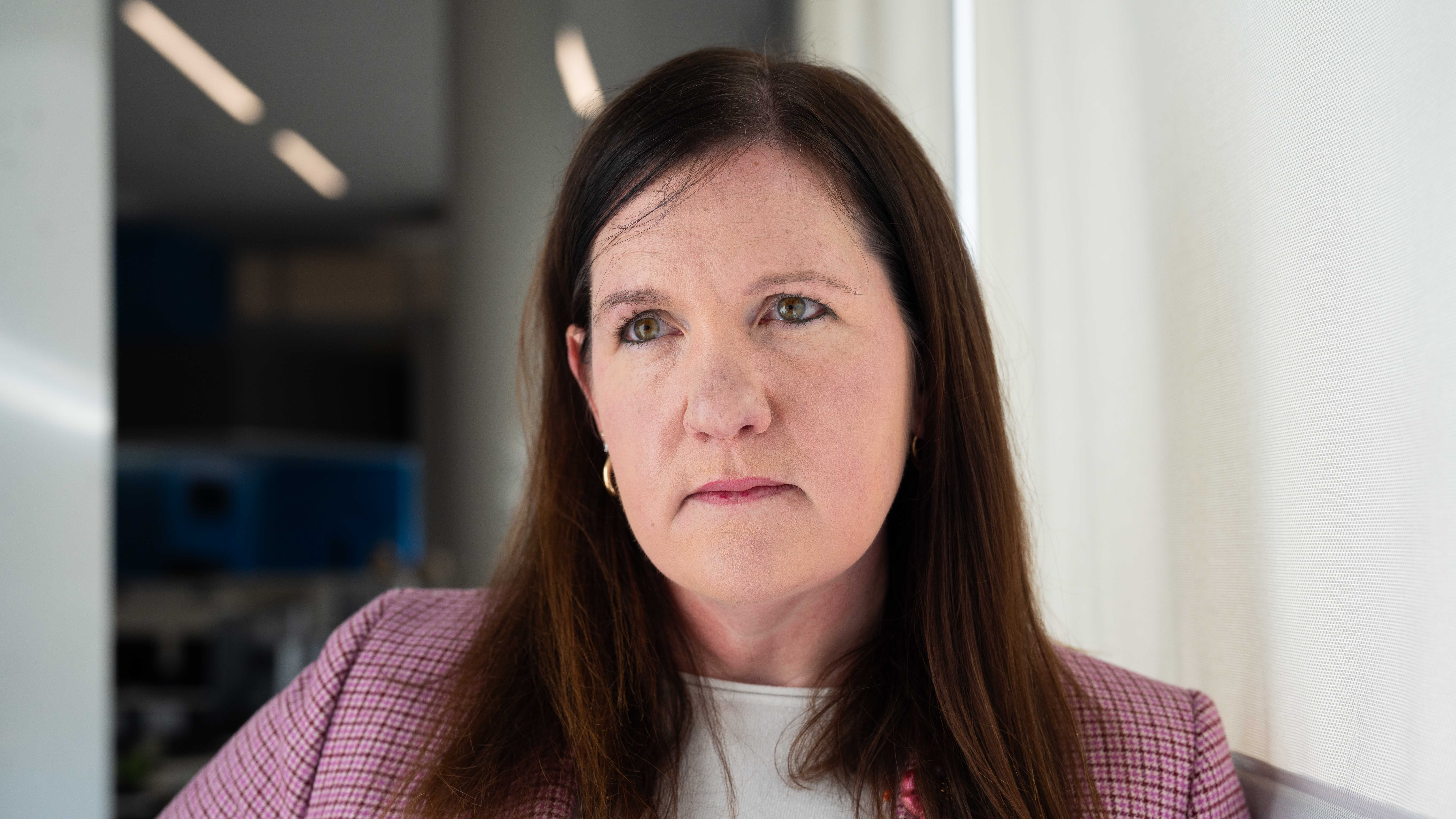Air Quality: a history
Marjorie White’s Birmingham Historical Society sits in its shadow in an old house and she walks these grounds as if she were Rosie… riveted by its relics.
“These are the stoves, which heat the air, which help produce the hot blast of air – blast – which runs the furnace.”
Back in its heyday, success was hot. And especially dirty.
“There’s some exhaust produced, which is piped underground. And at the point, there was a need to exhaust that gas. This very large iron plate was cranked… and the exhaust went straight up that stack…
And that process was repeated at countless other blast furnaces and foundries in Jones Valley – aka Birmingham, the industrial mecca of the South.
Millions of tons of iron and steel were made through the decades spitting out soot and particulates while rolling out products that were sold the world over. Mine workers plucked coal out of the ground kicking up a chalky black dust. Coke ovens emitted something foul and gritty. Locomotives choo-chooed through moving it all from one place to another; the trains even dirtied the air. It was a concoction that could choke even the heartiest of lungs.
But Pat Shelby didn’t care.
“I was making a good living, I was having fun. I was young. And, you know, in youth, you don’t worry about those kinds of things.”
Shelby worked a lot of those blast furnaces for Sloss and its subsidiaries – downtown and on the northside. He put in more than four decades in the dinginess, a badge of honor shared by most Magic City workers and residents at the time.
“Well, you know, as long as there was smoke coming out of the stacks in Birmingham, industry was doing well. When the smoke quit, there wasn’t anybody doing anything.”
Now 79, Shelby has COPD, Chronic Obstructive Pulmonary Disease. His doctors say years of those blast furnaces and cigarettes are to blame.
Early on, physicians knew on some level the effects industry had on Birmingham’s air quality. In the 1950s, a couple of special air sampling studies were done finding three times the particle matter in the air after a steelworkers’ strike ended and the mills blazed back up.
It doesn’t take a rocket scientist – or foundry man — to figure out that more industry equals more pollution. But Birmingham has a couple of other things going against it: the area’s stagnant weather, especially in the summer, with little or no wind and its geography, tucked in a valley that sprawls for miles along the tail end of the Appalachians.
Marjorie White says people used to think Red Mountain, just to the south, served as some sort of de facto boundary.
“There was one advertisement in the twenties talking about moving to areas over the mountain, out of the smoke zone and into the o-zone. Now, I don’t know what o-zone meant, (I didn’t think we wanted to be in o-zone) I don’t think so either, but at least they were out of the smoke zone.”
In theory, that explanation makes a lot of sense. But in reality…
“That’s just not quite correct.”
Sam Bell with the Jefferson County Health Department is in charge of environmental health. He says it’s a misnomer that the ridges around Birmingham keep the bad air in one place.
“Since we have air quality monitors throughout Jefferson County, we can’t usually say it’s better to move over the mountain – personally, I live in one of those over the mountain communities – but air quality there can be just as bad as it is in downtown Birmingham.”
That’s because no longer does pollution come from a limited area, certain specific places, such as the case was decades ago.
“In those days, it was really the easy ones to identify, was the steel industry, the foundries. And today, it is us. We have met the enemy and he is us.”
Or she. Or it.
The Community Foundation board member Cameron Vowell says cars, trucks, coal-fired steam plants all contribute now to Birmingham’s air quality problems. Back in the 1960s and 70s, Vowell – then a graduate student — helped organize a group called GASP – the Greater Birmingham Alliance to Stop Pollution. Eventually, GASP was instrumental in getting lawmakers to pass the Alabama Air Pollution Control Act, which set statewide standards for pollutants.
Over the years, the federal government has mandated even stricter pollution standards, higher gas mileage for cars and utilities have retrofitted their generating plants with pollutant-reduction technology.
But Vowell says much more can be done. Birmingham, after all, still fails to attain the Environmental Protection Agency’s standard for particulate matter and ozone.
“It’s really a much more difficult set of issues to address than simply telling five or six kinds of industries to clean up their stacks.”
The challenge, she says, is to find the environmental warriors of today. The
people who – like she did 30 and 40 years ago – will meet, get the word out about being eco-friendly and hold lawmakers’ feet to the fire for responsible legislation.
Barring that, the future looks hazy.
How China, not the U.S., became the main climate solution story in 2025
The U.S. has become a "side character" in the global story of renewable energy, experts say. China dominates the sector, with positive implications for the climate and their economy.
Republicans push high deductible plans and health savings accounts
A Republican call to give Americans cash instead of health insurance subsidies revives an old idea that has left millions with medical debt.
Supreme Court to hear case that could vastly expand presidential powers
The Supreme Court hears arguments in a case about President Trump's firing of a Federal Trade Commissioner. At stake is a 90-year precedent limiting the president's power over independent agencies.
Zelenskyy heads to London for more Ukraine peace talks. Here’s what to know
The talks signal fresh support from European allies. But they follow stalled U.S. negotiations in Miami and comments from President Trump's son suggesting Washington is ready to pull back.
Tributes, not politics, play center stage as Trump hosts the Kennedy Center Honors
President Trump said he was closely involved with picking the honorees, and on Sunday he became the first president to host the Kennedy Center awards ceremony.
Thailand launches airstrikes along border with Cambodia as tensions reignite
Both sides accused the other of breaking a ceasefire that halted fighting earlier this year. Longstanding border disputes erupted into five days of combat in July that killed dozens.








